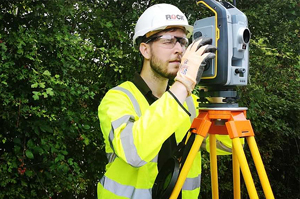The latest report from the Utility Strike Avoidance Group [USAG] has revealed a consistent rise in Utility Strikes, impacting the health and safety of workforces worldwide enter the Underground Utility Survey.
Despite these alarming statistics, clear and accurate utility records do not exist for many development and construction sites, not only impacting the safety of a workforce, but also resulting in significant cost implications in the short and long-term.
A quick, easy and cost-effective solution is undertaking an Underground Utility Survey, which can be implemented using the latest innovative EML technology to successfully locate known and unrecorded services.
Aside from significantly reducing the risk of utility strikes and the potential impact on site workers, Underground Utility Surveys provide a host of additional benefits, including:
Complete Projects on Time
Utility Surveys aid developers in keeping projects on schedule, particularly when taking into account the potential impact locating unexpected utilities could have during a construction or development process.
Not only will an underground utility survey alleviate any nasty surprises, it will also minimise the likelihood of having to foot the bill for any potential expensive repairs.
What’s more, having to expand project deadlines following a utility strike is likely to result in costly outcomes through additional labour costs, construction work and contract renewals.
Reduces Intrusive Investigation
Underground utility surveys minimise the requirement for invasive underground inspections.
Depending on the project, surveys can be undertaken alongside topographical surveys, where a combined topographical and underground utility drawing can be produced. The process includes using lightweight Ground Penetrating Radar (GPR) technology to provide non-intrusive detection, such as mapping underground pipes and cable ducts alongside identification of cable services.
Alternatively, project developers can use a process called ‘Slit Trenching’ but compared to utility surveying, it will only provide limited knowledge of the site.
Comply with BSI standard PAS 128 Surveys 
As the demand on UK infrastructure continues to grow with increasing developments, utility surveys are vital in ensuring the construction of a safe and reliable construction site.
Underground utilities can now be detected more easily with new BSI standard procedures, ensuring accurate detection, verification and location of active, abandoned, redundant or unknown utilities.
With the process having to conform to PAS 128 standards, utility surveys represent a clear indicator of the presence or absence of underground utilities prior to breaking ground, aiding any construction and development process from the word go.






